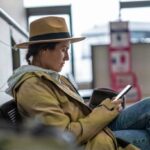The level of sewing is taken into account when choosing a sewing machine. This practical object requires learning, and there is a fold to take to feel perfectly comfortable. For beginners, it is often advisable to opt for a mechanical sewing machine, simpler than an electronic model; the first being less elaborate than the second.
A conventional sewing machine has no different stitch option. “The mechanical sewing machine gives good notions to novice users, underlines the expert. It allows to be entirely directed oneself, and its adjustments are carried out by hand.”
Beginners are often oriented towards entry-level models, having fewer functions while remaining qualitative. Available in mass distribution, many models for less than 200 euros perfectly meet the needs of novices in sewing. The expert suggests for example the Tradition 2250 model at Singer: “A wise choice for a beginner, benefiting from an excellent quality-price ratio.” Using the best monogram machine is essential there.
Which sewing machine to choose when you are confirmed?
Advanced users, who have frequent use of their sewing machine, opt for an electronic model . More elaborate, an electronic sewing machine allows more variants than its mechanical competitor. Among its specificities, we can note a buttonhole system, a needle threader, an automatic thread cutter, as well as the possibility of choosing the number of stitches. There are more creative choices.
At Pfaff, the passport 3.0 model is intended for experienced users who regularly use their sewing machine. At Singer, the Featherweight and Futura 4400 models represent practical sewing machines with many functions. For the expert, even if electronic sewing machines are obviously synonymous with practicality, it is not easy to favor a brand. “In the context of expert use, German brands are particularly renowned, like Pfaff,” she says. “For professional use, stylists will certainly turn to industrial machines.”
What are the specifics to watch carefully at the time of purchase?
Engine power: synonymous with the speed of the sewing machine, this function is essential. To assess the power of its engine, just look at the number of revolutions per minute.
The number of points per minute: it is also a performance indicator. You should also remember to look at the settings for the length and width of the stitches.
Basic sewing stitches: straight stitch, zig zag stitch, overlock stitch, invisible hem stitch and buttonhole.
Sewing fabrics: fabrics and thick materials such as jeans or leather require a high-end machine. In theory, sewing machines are suitable for all thicknesses, but the choice may differ depending on the fabric to be sewn. The needle adapts according to the fabric chosen.
The weight and size of the sewing machine: several sizes of sewing machine are commercially available. Often, the advanced models are more massive. The volume is to be taken into account for a sewing machine that one wishes to transport, for example to go to sewing lessons. In theory, a sewing machine for household use weighs between five and eight kilos.








